Nearly 80% of CXOs report that siloed data, and outdated systems are holding back transformation, slowing decisions, and inflating costs. For today’s business leaders, data transformation isn’t optional—it’s a board-level mandate. This is where Databricks Lakehouse AI steps in.
Databricks helps C-level executives (CXOs) with data transformation by addressing their top priorities: accelerating innovation, controlling costs, and reducing risk. The Databricks Data Intelligence Platform achieves this by unifying data, analytics, and AI on a single lakehouse platform, which eliminates complexity and data silos.
For CXOs, adopting Databricks for data transformation is the fastest path to building a future-ready, AI-driven enterprise.
The Databricks imperative for CXOs
Databricks simplifies data management and accelerates insights. The platform unifies data lakes and data warehouses, providing a single, coherent view of both structured and unstructured data. This streamlined architecture replaces the need for costly and complex multi-system setups.
By providing a unified platform, Databricks for data transformation eliminates time-consuming data movement and preparation across separate systems. This speeds up the delivery of high-quality, trusted data to business intelligence tools, empowering faster decision-making.
Table of Contents:
- Data Transformation as a CXO Imperative
- Databricks for Data Transformation: The Unified Playbook for Enterprises
- Turning Data into Actionable Business Value
- Aligning Databricks for Data Transformation Goals with CXO Priorities
- Building the Next-Gen Enterprise with Databricks for Data Transformation
- Conclusion
- FAQs
It also reduces operational complexity and costs. The lakehouse architecture utilizes low-cost cloud storage for data lakes, while providing the performance and management features of a data warehouse. This reduces total cost of ownership compared to traditional data warehousing. With serverless computing options that automatically scale compute resources to match demand, Databricks ensuring optimal cost management by avoiding over-provisioning.
Databrick architecture for data transformation powers AI and advanced analytics at scale by offering a collaborative workspace where data scientists, engineers, and analysts can work together seamlessly, fostering innovation and democratizing access to advanced analytics.
Databricks for Data Transformation: The Unified Playbook for Enterprises
As a unified data intelligence platform, Databricks offers a comprehensive “playbook” for modern enterprises to maximize the value of their data assets and build a data-driven culture.
Rather than depending on a fragmented and complex collection of disparate tools, enterprises can unify their data, analytics, and AI on a single lakehouse architecture. This approach accelerates innovation, boosts efficiency, and ensures robust governance.
Here is the unified playbook for modern enterprises to effectively leverage Databricks.
The core of the Databricks for data transformation playbook is the lakehouse architecture, which combines the low-cost, open storage of data lakes with the reliability and structure of data warehouses.
This eliminates data silos and provides a single source of truth for all data, regardless of type (structured, semi-structured, or unstructured).
Implement the medallion architecture (a series of data layers – Bronze, Silver, & Gold) that refine and enrich raw data from ingestion to consumption.
What is Medallion Architecture? A medallion architecture is a data design pattern used to logically organize data in a lakehouse, with the goal of incrementally and progressively improving the structure and quality of data as it flows through each layer of the architecture (from Bronze to Silver to Gold layer tables). Medallion architectures are sometimes also referred to as “multi-hop” architectures.
Remember that databricks provides a collaborative workspace where diverse data teams can work together on the same data in a single environment. Therefore, it enables cross-functional teamwork.
Turning Data into Actionable Business Value
Using the Databricks lakehouse for data transformation to turn data into actionable business value involves moving beyond simple storage and reporting to integrate data, analytics, and AI into a single, unified platform.

By removing data silos and providing a reliable foundation for all data workloads, Databricks empowers organizations to accelerate insights, drive strategic decisions, and realize measurable returns on investment.
The framework for transforming data into value is below:
Consolidate and prepare data with a unified engine. The lakehouse architecture that is designed on Delta Lake permits users to ingest and store all your data into a single, reliable repository.
Establish a single source of truth (relevant information/data). This prevents data fragmentation and ensures that all teams are working with the most current information, in turn, improving data integrity and decision-making speed.
Build reliable data pipelines. Tools like Delta Live Tables (DLT) automate the building and management of robust ETL (Extract, Transform, Load) pipelines for both batch and streaming data. This reduces operational complexity and ensures data quality & reliability.
Operationalize AI for strategic advantage. Remember Databricks provides managed MLflow to simplify the entire ML lifecycle, from experimentation to production deployment and monitoring. The platform’s ability to integrate with foundational models and your private data helps build custom, governed AI solutions.
Real-world examples of data to business value
Financial services: A retail bank uses real-time transaction data and ML models at the Databricks lakehouse to detect fraudulent activity in real-time, significantly reducing financial risk and improving customer trust.
Manufacturing: An equipment manufacturer analyzes massive volumes of IoT sensor data to enable predictive maintenance. By forecasting equipment failure, they reduce unplanned downtime and maintenance costs by 28%.
Retail/eCommerce: An e-commerce company uses Databricks to create a unified view of customer data from online and offline channels. This enables hyper-personalized marketing campaigns and real-time product recommendations that drive higher sales and engagement.
Aligning Databricks for Data Transformation Goals with CXO Priorities
A successful Databricks transformation requires explicitly translating technical goals into the language and priorities of C-level executives. By aligning the Databricks lakehouse capabilities with each CXO’s mandate, an organization can ensure buy-in, accelerate adoption, and drive measurable business value.
For the CEO, the Databricks transformation is not about technology, but about gaining a competitive edge by fostering innovation and maximizing market share.
So how should the transformation goals be synced with CXO priorities?
If planning to align transformation goals with the CEO, growth, innovation, and market leadership are the three major aspects.
For the CEO, the Databricks for data transformation is not about technology, but about gaining a competitive edge by fostering innovation and maximizing market share. Deploy AI-powered agents and analytics on the lakehouse to enable hyper-personalized marketing and product recommendations that drive customer satisfaction and retention. Breaking down data silos empowers every team, from sales to operations, to make informed decisions based on a single source of truth.
When it comes to focusing on financial performance, databricks address costs, exhibit clear ROI, and facilitate better financial predictions. The CIO is responsible for the company’s technology roadmap, security, and managing technical debt. Databricks help consolidate tech stacks and de-risk the data estate.
Building the Next-Gen Enterprise with Databricks for Data Transformation
Building the next-generation enterprise requires a data and AI strategy that is unified, agile, and scalable. The Databricks for data transformation, built on the lakehouse architecture, provides the foundational technology to achieve this vision.
By breaking down silos and consolidating data, analytics, and AI into a single environment, Databricks enables enterprises to out-innovate competitors, make data-driven decisions faster, and operate more efficiently.
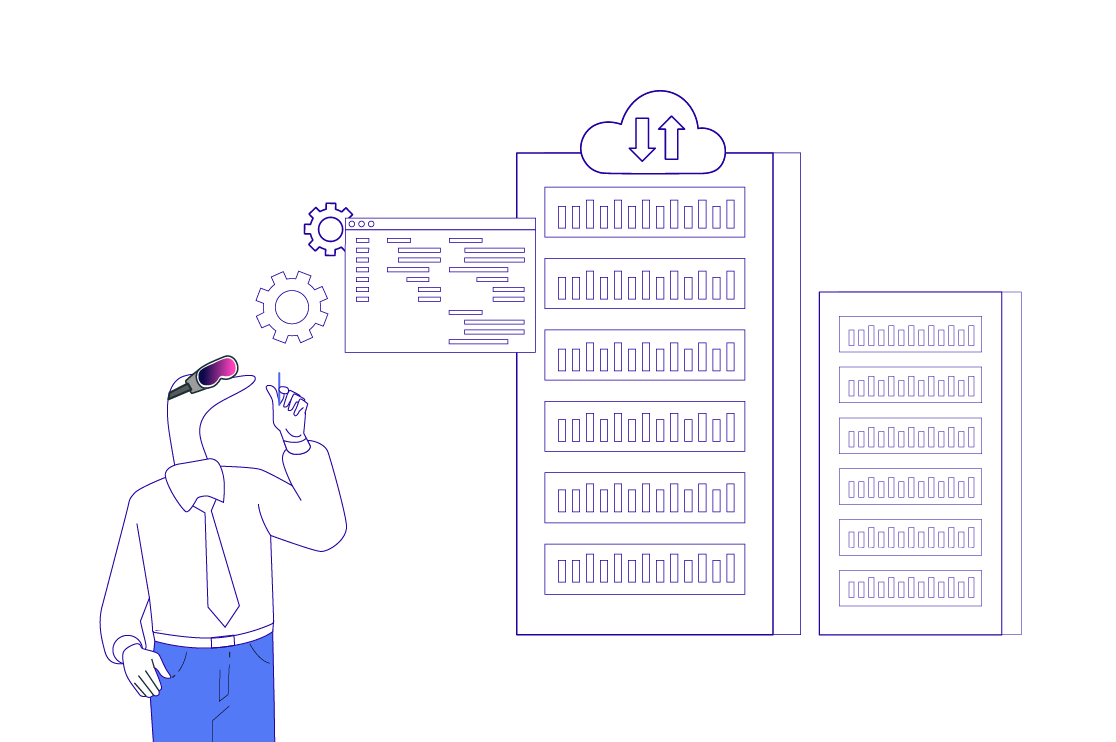
The five pillars of the next-gen enterprise with Databricks for data transformation.
Unified, open data platform
Democratized and intelligent AI
Operationalized efficiency and automation
Strategic ecosystem integration
The next-gen enterprise doesn’t operate in a vacuum. Databricks integrates seamlessly with the broader technology ecosystem to maximize existing investments and extend capabilities.
By embracing these five pillars with Databricks for data transformation, enterprises can future-proof their data strategy, accelerate innovation, and build a truly intelligent, data-driven organization capable of adapting to any market challenge.
Conclusion
In the digital-first economy, data is the currency of growth and CXOs can no longer afford fragmented architectures or slow insights. Databricks Lakehouse AI offers a unified, intelligent framework that aligns directly with boardroom priorities: agility, cost optimization, innovation, and trust
By consolidating data and AI into one platform, Databricks for CXOs transform vision into measurable ROI, helping leaders outpace disruption and build resilient enterprises. The next wave of competitive advantage isn’t about collecting data about activating it.
And with BluEnt as your trusted Databricks consulting service provider, CXOs can finally have the playbook to turn transformation goals into real-world outcomes.
FAOs
What makes Databricks a must-have for CXOs leading data transformation?It consolidates data engineering, analytics, governance, and AI capabilities into a unified Lakehouse and Data Intelligence Platform—streamlining execution and scaling insights.
How do Databricks help CXOs align transformation with cost, risk, and insight goals?It simplifies architectures to lower costs, enforces fine-grained governance to reduce risk, and supports diverse data types for actionable insights
Can Databricks support real-time or AI-driven use cases?Yes—through tools like DLT, Mosaic AI, and real-time pipelines (e.g., integration with Kafka via Tableflow)
How can enterprises manage change while adopting Databricks?Start with frameworks in the Executive Guide’s parts 1 and 3—secure executive buy-in, migrate phase-wise, build cross-functional teams, and govern the transition strategy
What is the Databricks Data Intelligence Platform and why does it matter?It is built upon Lakehouse by embedding semantic intelligence, governance, AI integration, and cost-aware orchestration—making the platform “aware” and proactive for enterprise needs.











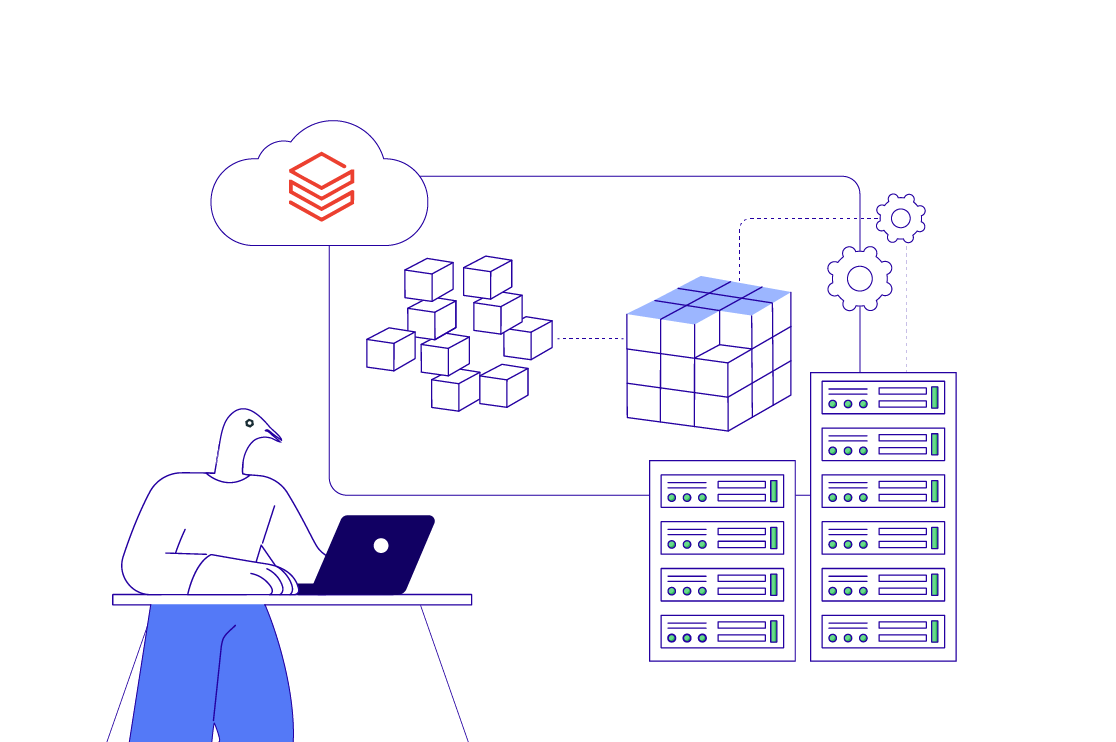
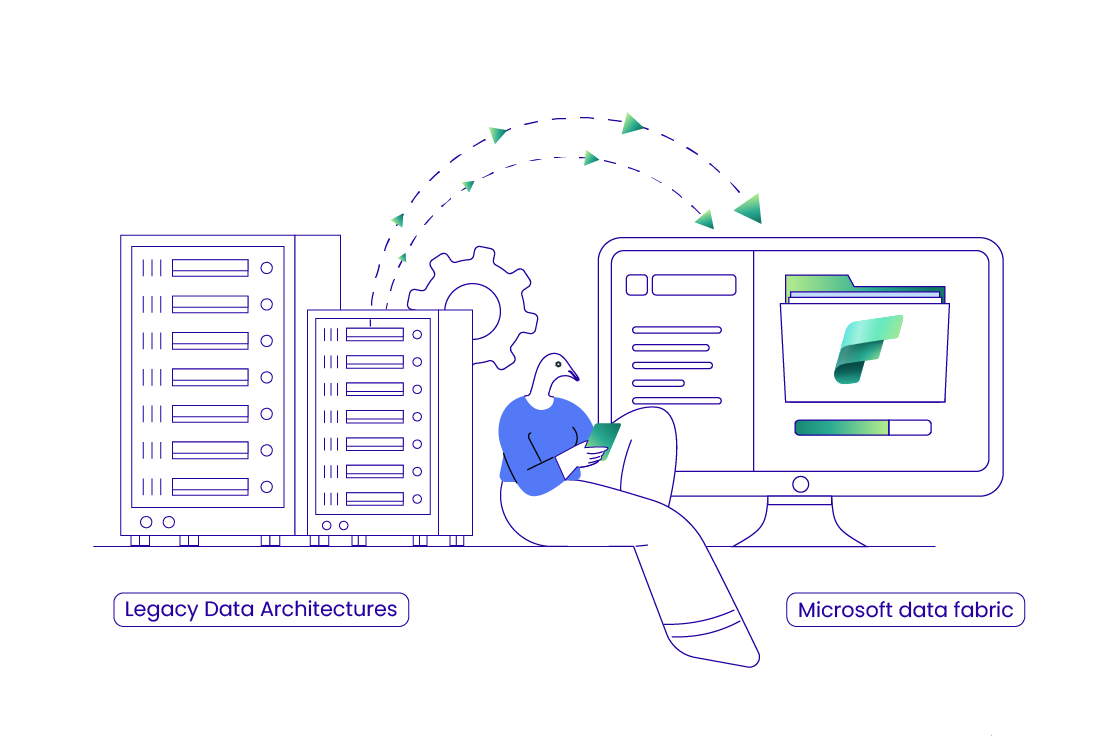 Migrating Legacy Data Architectures to Microsoft Data Fabric: Key Risks, Rewards, & ROI
Migrating Legacy Data Architectures to Microsoft Data Fabric: Key Risks, Rewards, & ROI 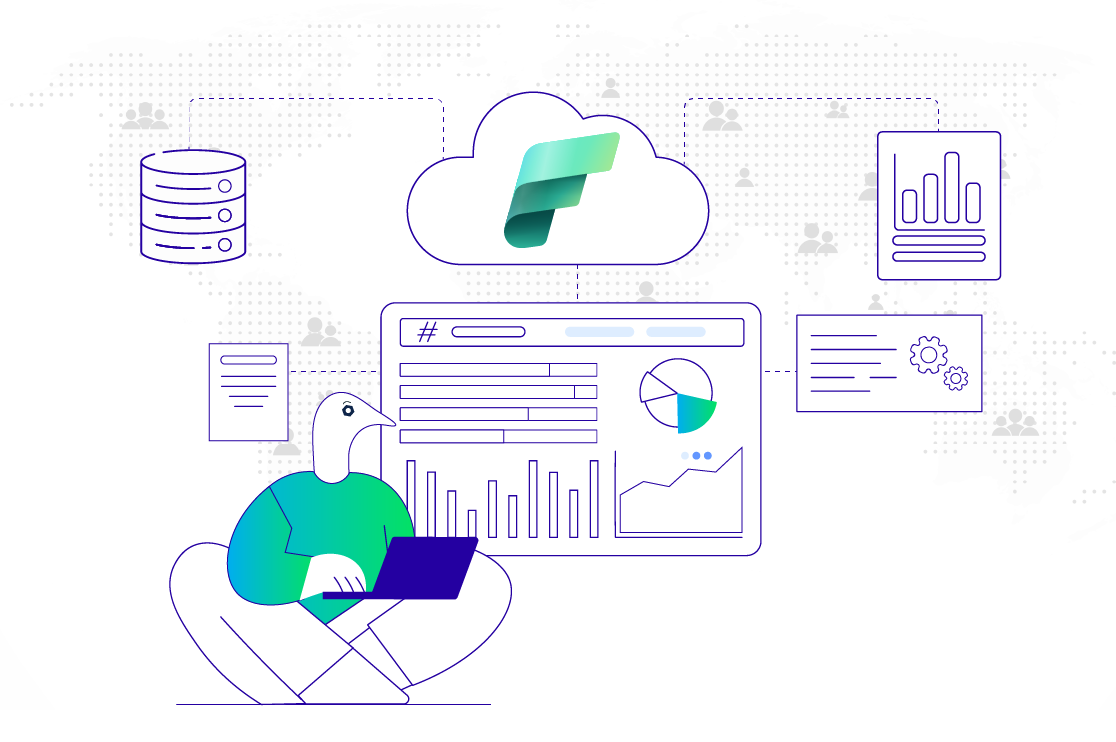 How Microsoft Data Fabric Integration Ensures Compliance, Security & Standardization for Enterprises
How Microsoft Data Fabric Integration Ensures Compliance, Security & Standardization for Enterprises 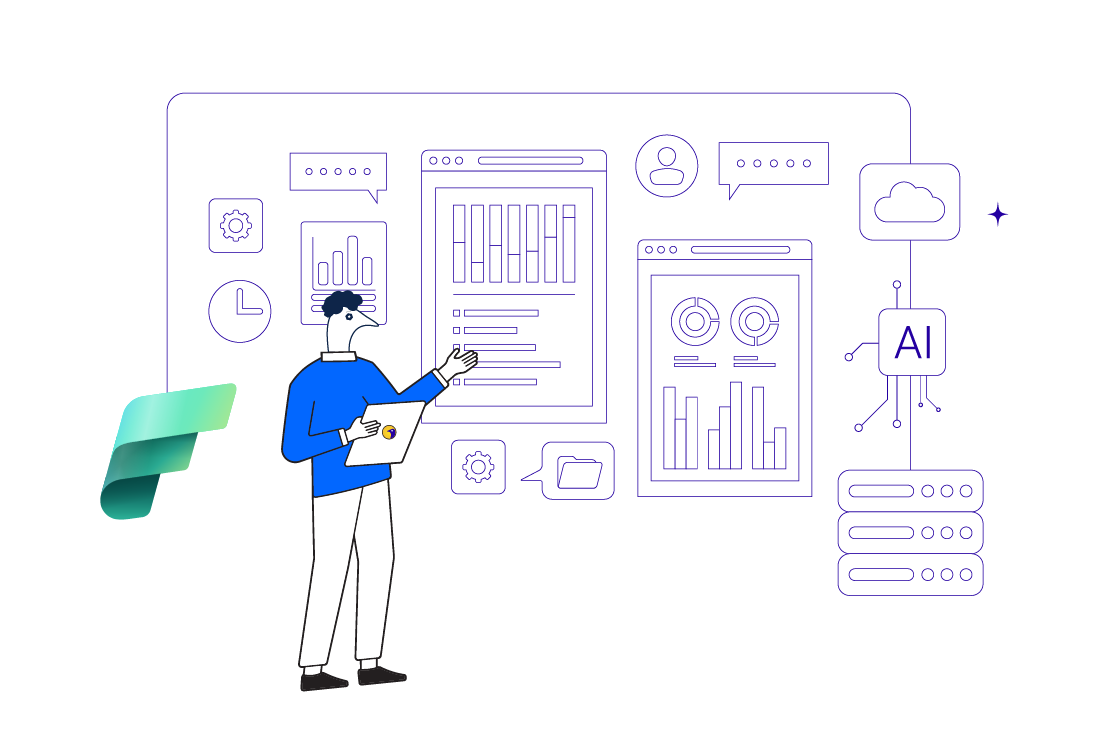 Real-Time Intelligence in Microsoft Fabric: Enabling CXOs With Faster Decisions
Real-Time Intelligence in Microsoft Fabric: Enabling CXOs With Faster Decisions 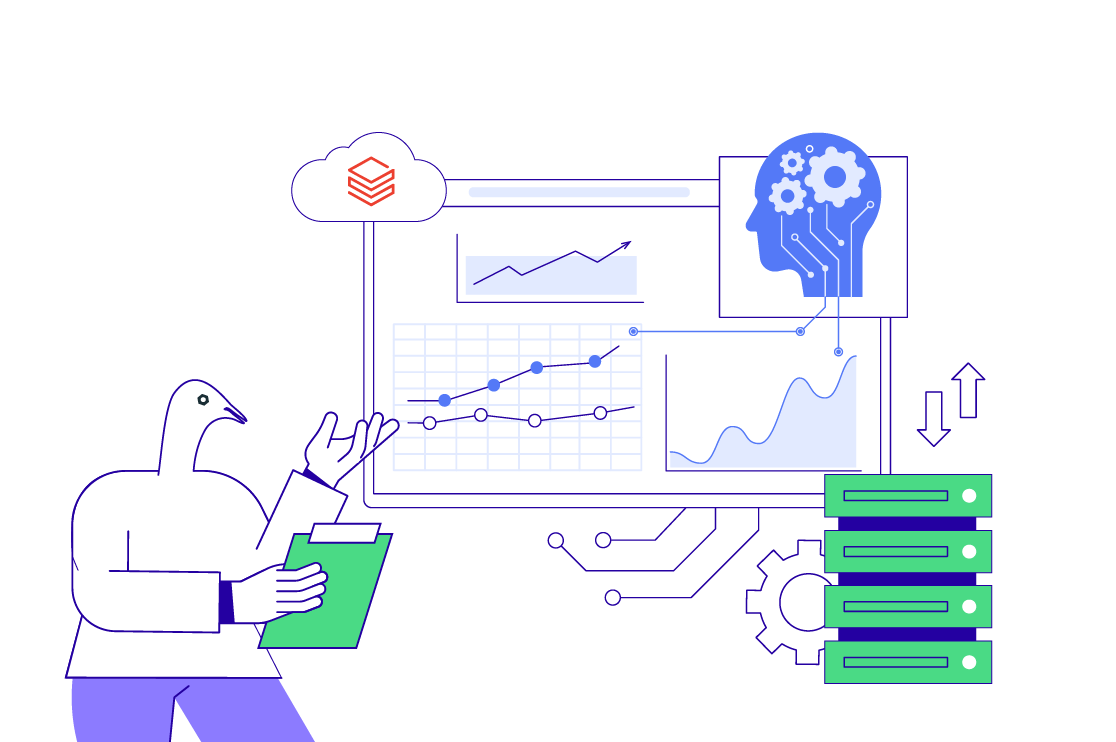 Scaling AI & Analytics on Databricks: CXO Use Cases that Deliver
Scaling AI & Analytics on Databricks: CXO Use Cases that Deliver 
